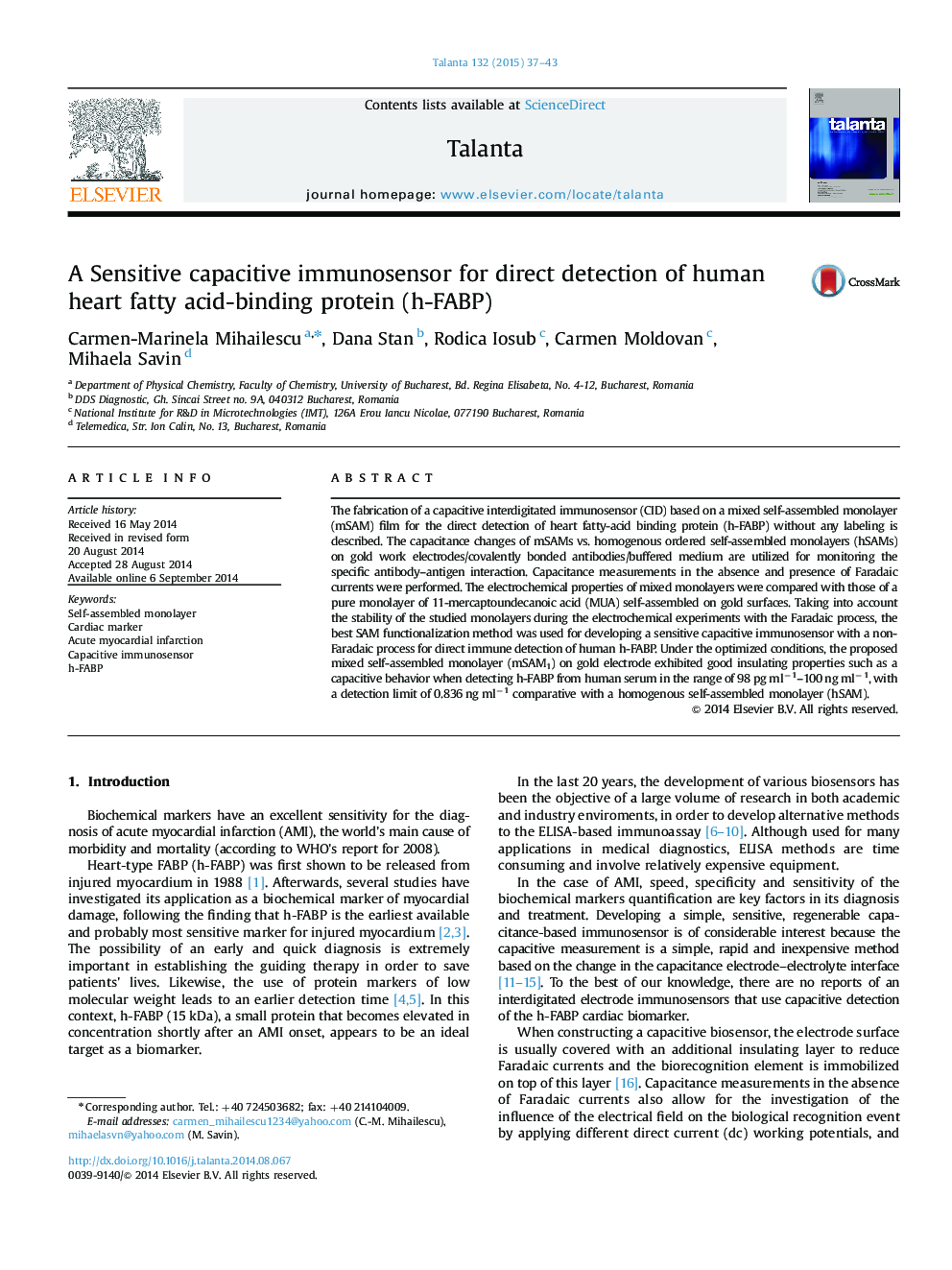| Article ID | Journal | Published Year | Pages | File Type |
|---|---|---|---|---|
| 1241985 | Talanta | 2015 | 7 Pages |
•Comparative electrochemical study regarding hSAM vs. mSAM1.•CV and Bode plot phase (φ vs. frequency) were used to characterize hSAM vs. mSAM1.•mSAM1 electrode was used for developing a sensitive capacitive immunosensor.•An integrated microfluidic platform for detection of h-FABP was developed.•A new capacitive CID immunosensor was developed for human h-FABP detection.
The fabrication of a capacitive interdigitated immunosensor (CID) based on a mixed self-assembled monolayer (mSAM) film for the direct detection of heart fatty-acid binding protein (h-FABP) without any labeling is described. The capacitance changes of mSAMs vs. homogenous ordered self-assembled monolayers (hSAMs) on gold work electrodes/covalently bonded antibodies/buffered medium are utilized for monitoring the specific antibody–antigen interaction. Capacitance measurements in the absence and presence of Faradaic currents were performed. The electrochemical properties of mixed monolayers were compared with those of a pure monolayer of 11-mercaptoundecanoic acid (MUA) self-assembled on gold surfaces. Taking into account the stability of the studied monolayers during the electrochemical experiments with the Faradaic process, the best SAM functionalization method was used for developing a sensitive capacitive immunosensor with a non-Faradaic process for direct immune detection of human h-FABP. Under the optimized conditions, the proposed mixed self-assembled monolayer (mSAM1) on gold electrode exhibited good insulating properties such as a capacitive behavior when detecting h-FABP from human serum in the range of 98 pg ml−1–100 ng ml−1, with a detection limit of 0.836 ng ml−1 comparative with a homogenous self-assembled monolayer (hSAM).
Graphical abstractFigure optionsDownload full-size imageDownload as PowerPoint slide
